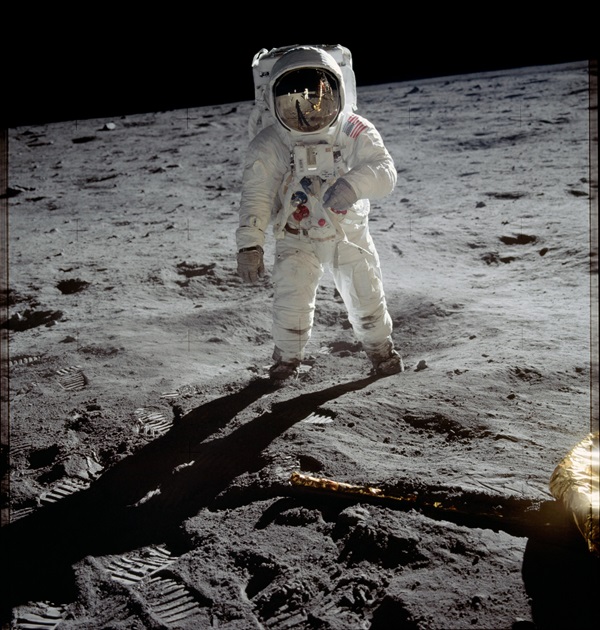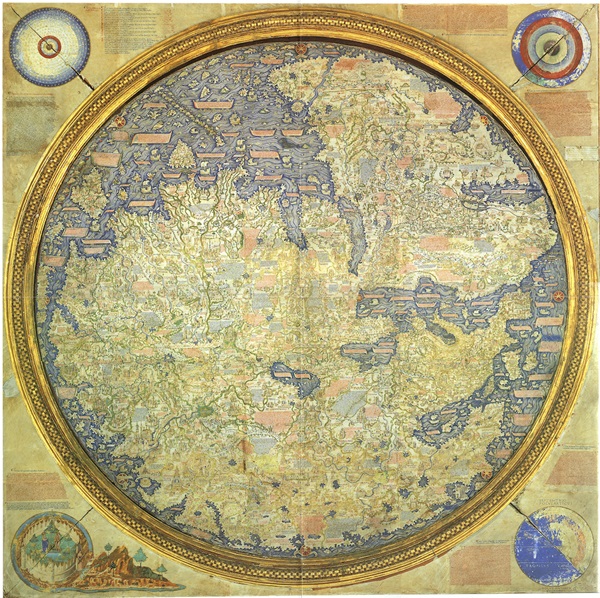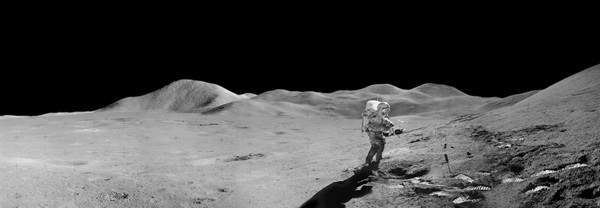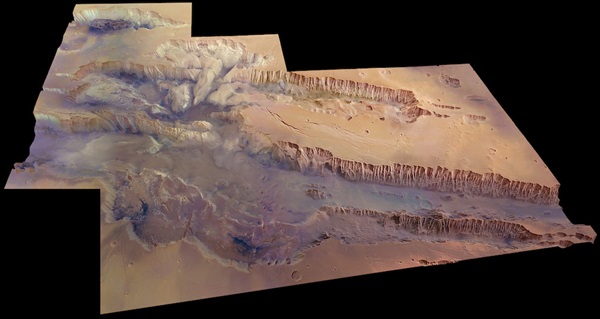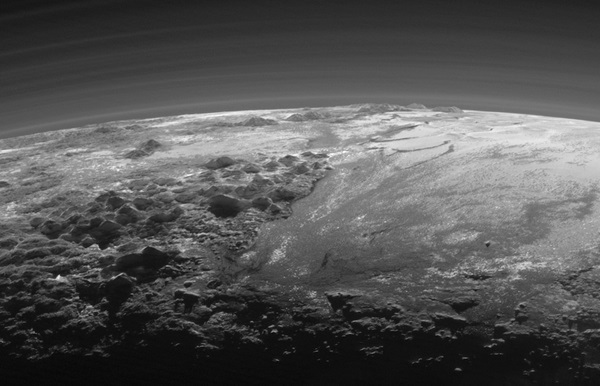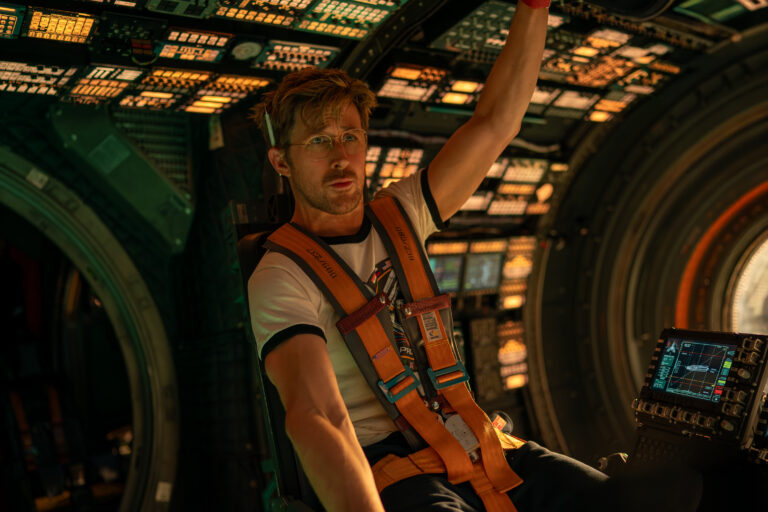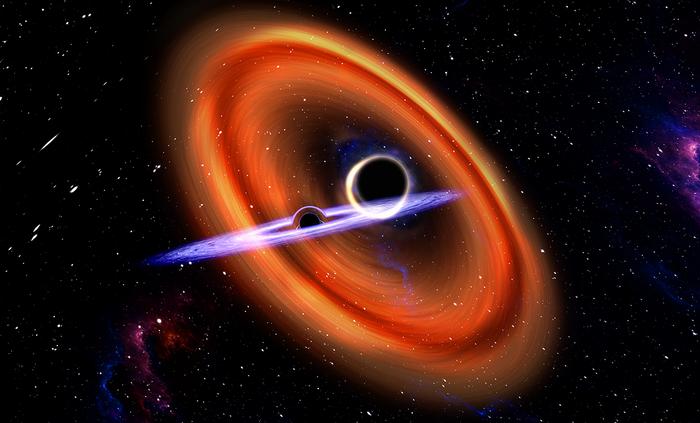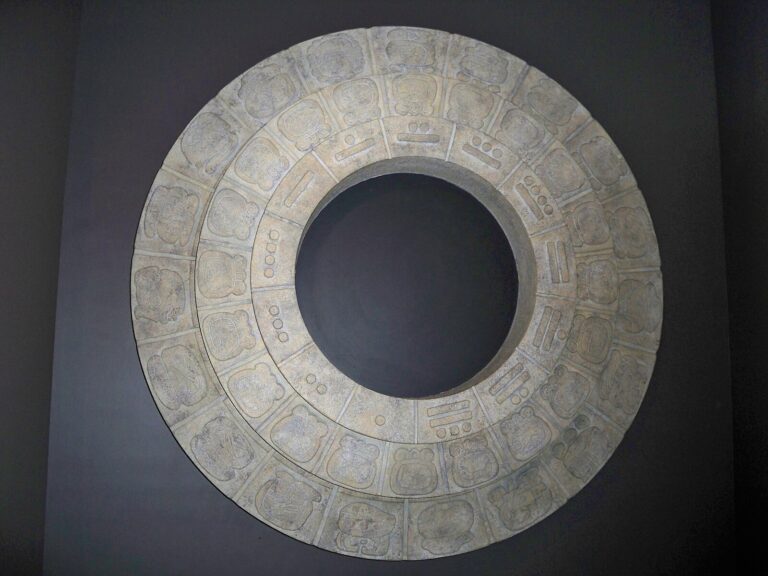Key Takeaways:
In the last decades of the 15th century, Western Europe experienced a metaphorical Big Bang — a sudden explosion of geographical knowledge that was later dubbed the Age of Discovery. Improved sailing ships carried profit-minded crews into uncharted seas, revealing the full extent of Earth.
In 1450, world maps drawn in Europe had only a few sketchy indications of West Africa and the Far East. But over the span of a single human lifetime, geographic knowledge grew faster than bamboo. Our understanding of where and how the continents were arranged was completely transformed. Explorers and merchants visited and mapped the majority of the temperate world’s coastlines. Globes became something more than minimally useful household furniture.
The Age of Discovery was the product of a special time, a period in European history when it was barely possible — and still highly dangerous — to chart the world. It could not have happened earlier because it depended on improvements in shipbuilding that allowed repeated crossings of the oceans.
A century later, with yet better technology, replicating these accomplishments became trivial. There is always a “right time” for pioneers who, by definition, work at the edge of the possible.
While you may think that, logically speaking, there can only be a single Age of Discovery, that’s not true. We are currently concluding the first Space Age, marked by landings on the Moon and robotic forays to other worlds. By the end of the century, we will enter a second Space Age: an extended period during which humans will undertake our own exploration of the solar system. As humanity develops the ability to travel to and wander around nearby worlds, we will see and photograph spectacular landscapes and novel views that will come to define our nearby space environment. The solar system will be captured in a series of iconic scenes, a collection of images that will shape how we think of our own galactic neighborhood.
But wait! Hasn’t that already occurred? Haven’t we already seen what the solar system has to offer?
We’ve made a start, beginning with the Apollo Program and its beguiling, close-up photos of our natural satellite. The standouts in this collection include the imprint of a boot in the lunar dust and Neil Armstrong’s full-body portrait of Buzz Aldrin in his helmet and space suit. Behind Aldrin are the dusty hills of what he called a “magnificent desolation.” It was a visual statement that humans had made their first foray into the final frontier.
We still don’t have equivalent photos of humans on Mars, although orbiters and rovers have given us close-up views of the Red Planet’s topography for half a century. To those you can add a few detailed photos of a small patch of Venus, various flyby portraits of fragile-looking asteroids, and, of course, broad-brush views of planets and satellites taken from distances of a few thousand miles or more. Thumb through any astronomy textbook and you will see all of these things.
However, with the exception of photos snapped by astronauts, our pictorial inventory of the solar system has been made with the dead eyes of cameras bolted to uncrewed spacecraft or rovers. Yes, they can document a scene, but they can’t gauge the emotional tug of the pictures they make.
But as we develop the ability to travel to other solar system worlds, we will inevitably stumble into vistas that will resonate with us: stark panoramas that capture a feeling of astonishment and images that don’t just show us a landscape, but take us there. This, the “visual poetry” of exploration, may not do much to further our scientific understanding. But it will surely continue to stoke our enthusiasm for venturing beyond our natal world. The best of these images will become tokens of our wanderlust — not to mention reliable moneymakers in the gift shops of planetariums and space centers.
Lunar landscapes
It might seem silly to assign much worth to the emotional power of photos made by future astronauts. Scientists will argue that only experimental results count, and beautiful pictures are little more than frill. If cameras are part of an experiment, they’re valuable only insofar as the resulting pictures can be quantified — accurately measured, scaled, and calibrated to produce useful numbers. But that’s a sterile view of science, akin to pretending that styling has no relevance to automobiles.
As an example of how art matters, consider the photograph made by Bill Anders Dec. 24, 1968. He and fellow astronauts Frank Borman and Jim Lovell were orbiting the Moon — the first humans to do so — on Apollo 8. As they rounded the lunar farside, Anders saw the disk of Earth edging above the horizon. Sensing a “Kodak moment,” he grabbed some color film, loaded it into his modified Hasselblad 500 camera, and snapped away. The resulting photo, Earthrise, is one of the most recognizable pictures ever taken. It is more than a striking photo of two worlds. It shows Earth as a jeweled ball, lost in an ocean of empty darkness.
Although about 6,000 photos were snapped by the favored few chosen to make giant leaps for humankind, these images were as much documentation as artistry. But imagine the future, the pictorial possibilities if you dared to hie yourself up Mount Huygens, the Moon’s tallest peak. It’s an 18,000-foot (5,500 meters) climb, and you’ll require a special suit and an oxygen supply (it will be BYOO no matter where you venture beyond Earth).
Mount Huygens rivals Mount Kilimanjaro in height, although it can claim considerably less wildlife. And because Mount Huygens is a member of a chain, Montes Appenninus, there would be satisfying views of lesser peaks to either side. There would also be vistas across broad, flat areas, including Mare Imbrium, the Sea of Rains. On Earth, the rule of thumb is that it takes an hour to climb 1,000 feet (305 m). So, you would need to allow two days to clamber to the top of this dusty massif.
Another point: Because the Moon has a diameter that’s little more than 1/4 that of Earth, the horizon will be closer. Even from a mountain, you won’t surveil a huge swath of territory. On Earth, the horizon seen from an 18,000-foot (5,500 m) mountain is about 164 miles (264 kilometers) away. On the Moon, it is 86 miles (138 km). On smaller worlds, it will look as if there’s an edge over which you might fall, especially as the horizon won’t be blurred by haze.
Martian terrain
It’s safe to say that the best Moon pictures are still to be made. But if you find the idea of Moon photos too old-timey, there’s always Mars. Imagine recording Mars’ crevassed and cracked terrain as it extends in all directions from the base of the solar system’s highest perch, Olympus Mons. That would undoubtedly be a picture suitable for framing.
Olympus is an inactive volcano more than twice the height of Mount Everest. Its highest reaches would offer you the sight of level topography as far as 240 miles (386 km) away. Given that this is the tallest mountain in the solar system, however, it may someday become entirely too popular and, like Everest, crowded with climbers.
Roughly a thousand miles from Olympus are three other volcanoes on Mars’ Tharsis Bulge: Ascraeus, Pavonis, and Arsia Mons, lined up like the stars of Orion’s Belt (or, if you prefer, the large pyramids at Giza) and spaced by roughly 500 miles (800 km), one to the next. This set of volcanic pinnacles would make a lovely, iconic composition from orbit, looking obliquely down the line at sunrise or sunset — at least until the next global dust storm sets in. If you ventured to their summits, you could look down into their central calderas — each broad enough to swallow the New York City metropolitan area.
There’s an alternative to schlepping a camera to altitudes where the martian atmosphere is thinner than the veneer on cheap furniture: a descent into the mother of all canyons, Valles Marineris. This is the only “canal” that Percival Lowell could possibly have seen with his 24-inch refractor in Flagstaff more than a century ago. It’s well-known for being five times deeper than the Grand Canyon and longer end-to-end than Route 66. This might strike space agency bureaucrats as terrain too risky for a rover.
But if you’re willing to find your way to the floor of this canyon, you could take some unique photos by standing near one of its 4-mile-high (6.4 km) walls.
Positioning yourself in the middle of the main channel might be disappointing, however, as the walls would be some 20 miles (32 km) away and difficult to discern. Of course, there would always be the novelty of stepping in a puddle or two of liquid water, made possible by the higher atmospheric pressure on the canyon floor.
In fact, when considering where award-winning photos might be taken, Mars is perhaps too easy. Images from the orbiting $40 million HiRISE (High Resolution Imaging Science Experiment) camera show details down to a foot (0.3 m) in size, good enough to direct you to some of the best picture opportunities. And rovers trundling across the dusty regolith have made snaps that are comparable in detail and dynamic range to those made with a cellphone. Even though rovers have yet to investigate much Red Planet acreage, their photos have already given an idea of the lay of the land. With a surface sculpted and shaped by 40 million centuries of fast winds, this modestly-sized world is undoubtedly a photographic paradise, a planetwide national park.
Distant worlds
Before quitting the inner solar system, let’s consider vistas that await anyone brash enough to challenge the torrid and foggy environment of Venus. Earth’s sister planet is swathed in an atmosphere of uninviting carbon dioxide, seasoned with clouds of sulfuric acid. The cloud layers begin in earnest 30 miles (48 km) above the planet’s surface and extend to an altitude of about 56 miles (90 km). Within the main cloud deck, visibility in this pea-soup atmosphere would be limited to a few miles — if there were anything to see up there in the first place. All of which suggests that until you get down onto the crispy surface, photos will be tediously blank and bland.
But there’s an exception to that. Get yourself a dozen or so miles above the main layer of clouds, and you will behold a spectacular vista at sunrise or sunset. Lying underneath your photographic perch will be a hummocky, yellow-white carpet — the roof of the cloud deck — stretching a few hundred miles in every direction. This is the reality of a runaway greenhouse effect, seen up close and personal, and unrivaled anywhere else in the solar system (as yet).
Heading out into the solar system, once Mars is in the rearview mirror, all hard-surface real estate will be limited to asteroids, planetesimals, or moons. But the gas giants are no less stunning. Beginning about 50 years ago, our spacecraft started showing us views of the jovian and saturnian systems. Both are unquestionably spectacular, even though photos of them have all been made from at least 2,000 miles (3,200 km) above their colorful atmospheres.
Jupiter and Saturn are each accompanied by ragtag hordes of moons, many of which have their own personalities. A pleasing pictorial arrangement of one or more of Saturn’s moons together with the planet and its ring system spanning the frame would be a real conversation starter in your game room.
For astronauts seeking solid ground, the choicest aesthetic pickings in these distant realms are hard to guess. This is largely because the smallest details we’ve been able to record of objects beyond the asteroid belt are typically 0.5 mile (0.8 km) in size or larger. (Let’s except the ground-level pictures of Titan made by the Huygens probe in 2005.)
But among the features we have seen, perhaps the most alluring are the ice mountains on Pluto, imaged by the New Horizons spacecraft. These hard-as-granite peaks are large enough that you could see them from the vicinity of Pluto’s moon Charon with a decent pair of binoculars. If you can withstand Pluto’s nippy temperatures (a bracing –387 degrees Fahrenheit [–233 degrees Celsius]), you might go down to its surface to line up a telephoto shot of a few mountains framing Charon, hanging low in Pluto’s black sky. Charon would be about seven times the apparent diameter of our own Moon.
As a somewhat more ambitious photographic effort, consider an expedition to roughly 2 billion miles (3.2 billion km) above the ecliptic plane in which the planets orbit. Bayonet a workaday lens onto your camera and aim it downward. You should be able to see the Sun and all the planets out to Saturn. They’ll appear only as bright dots. (The Sun will be a fat bright dot!) But the fact that the image is real, and not a cut in a book, should lend it a certain je ne sais quoi.
The human touch
I’ve heard space aficionados, including scientists, insist that the future of space exploration won’t include much of the freewheeling human wanderings described here. These proudly pragmatic folk maintain that they’re only being realistic when they argue that the solar system should be explored and photographed by robots, not people. Humans should simply stay at home and view our cosmic neighborhood from afar. After all, most astronauts insist on round-trip tickets, something that the robotic craft never do.
That sounds reasonable, at least, at first. But try walking into a sixth-grade classroom and asking how many of the kids are keen to go into space. You’ll find a lot of takers.
Then ask how many prefer to become earthbound engineers, building robotic spacecraft. Many of those hands will go down. Yes, space exploration is a hard, expensive, and dangerous business, so it’s only natural to champion a very practical approach — namely, that we tether humans to terra firma and leave the exploring to the machines. The latter don’t require heavy and complicated life support systems, or shy away from mortal danger.
But clearly, robotic exploration is not the same. Photos made by robot cameras may have tremendous fidelity, but the only artistry they have is that arranged by their earthbound handlers. Arguably better pictures can be made by on-the-spot humans with an aesthetic bent. More than 60 years ago, the Space Age paintings by Chesley Bonestell inspired movies, magazine series, and, ultimately, an entire generation of youngsters who wanted to go to other worlds. They still want to go.
There’s something fundamentally different about witnessing nature in person, for otherwise how do you justify muscling a 12-inch Dobsonian out on a cold night to spend hours squinting through a viewfinder? Especially when you could find a better picture more comfortably (and with considerably less expenditure of time, money, and effort) online?
It’s the romance of going somewhere — to step into a time machine that can take you millions of miles into the velvet voids of space to give you a view that’s more than just an image, but an experience.

